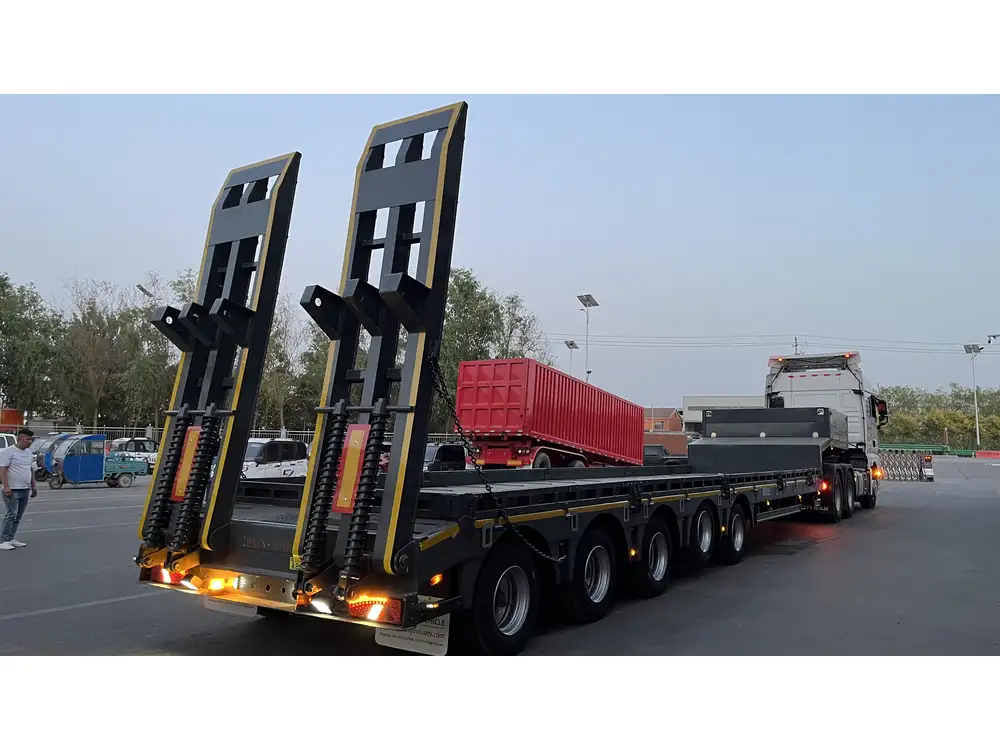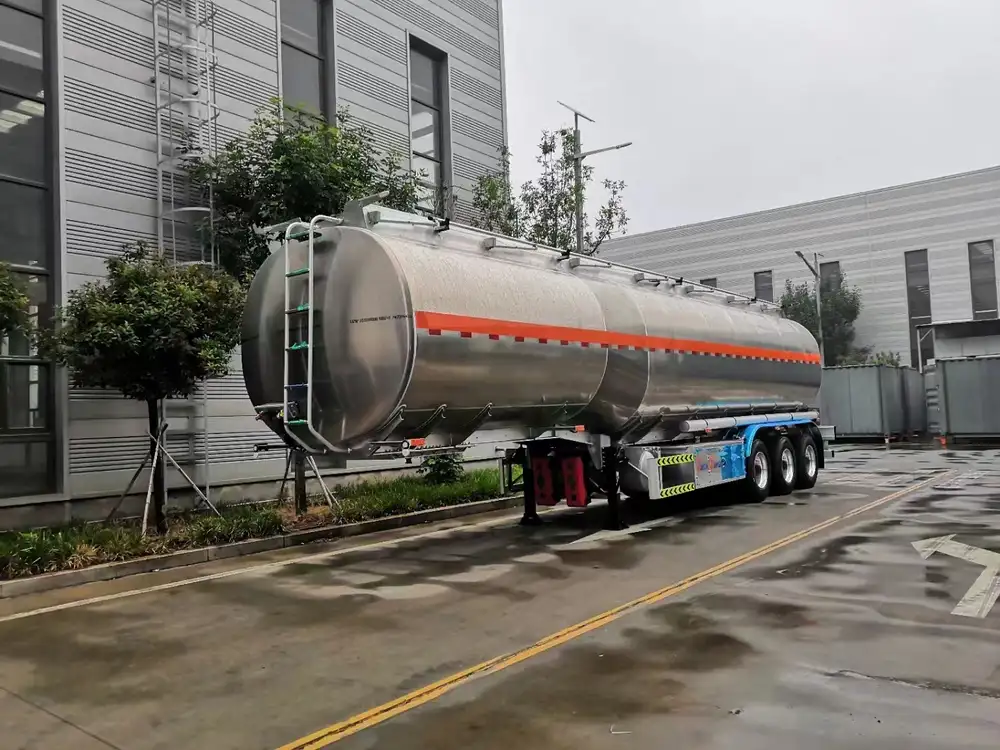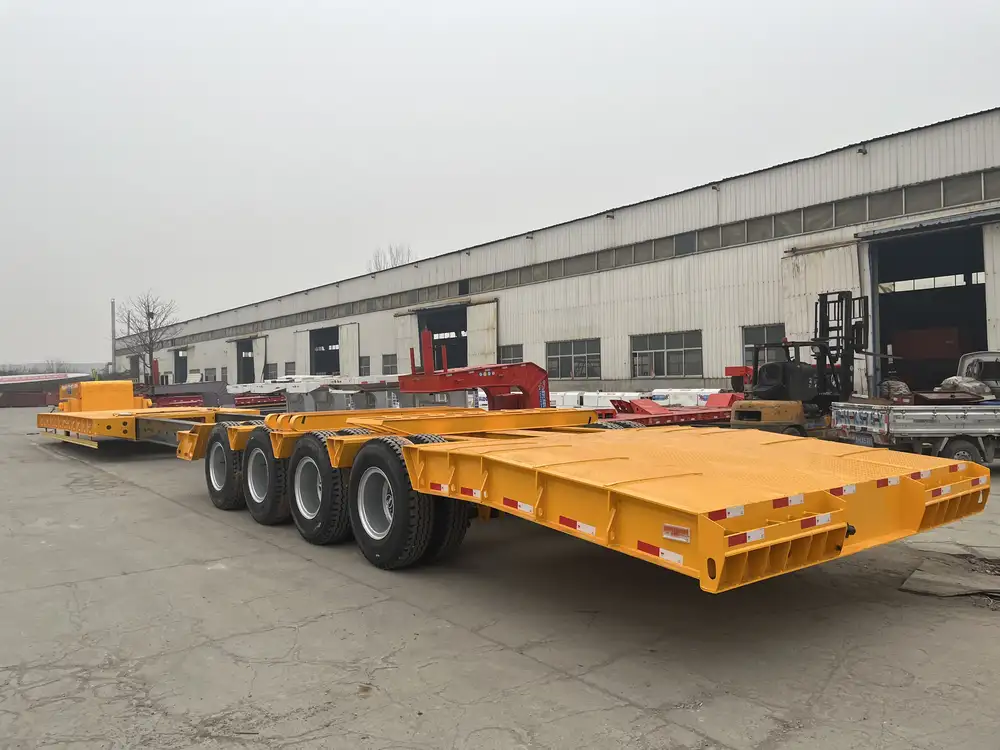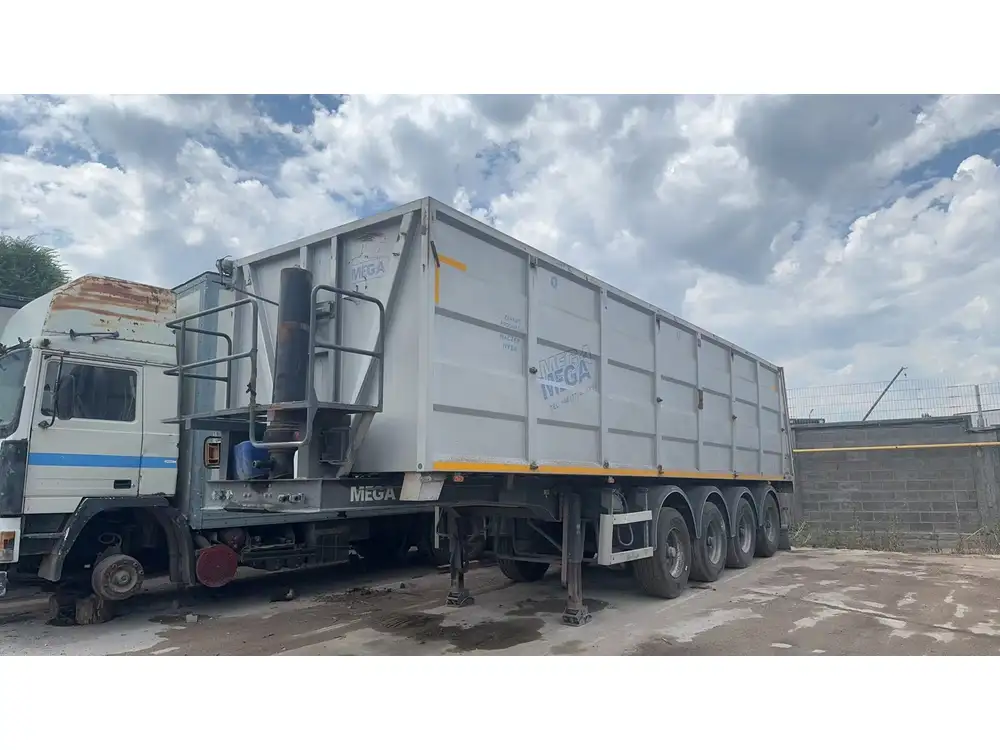At CarMax Vehicle, we prioritize safety and efficiency in every semi-trailer we manufacture. A cornerstone of this commitment is the Anti-lock Braking System (ABS), an essential feature that enhances vehicle control and reduces stopping distances. This comprehensive guide delves into the intricate components and operational mechanisms of ABS in semi-trailers, providing a detailed understanding of how these systems contribute to safer transportation.
Table of Contents
- Introduction to ABS in Semi-Trailers
- Core Components of ABS Systems
- Operational Mechanics of ABS
- Benefits of ABS in Semi-Trailers
- Maintenance and Troubleshooting ABS Systems
- Technological Advancements in ABS
- CarMax Vehicle’s Approach to ABS Integration
- Comparison of ABS Systems in the Market
- Conclusion
- Frequently Asked Questions
Introduction to ABS in Semi-Trailers
Anti-lock Braking Systems (ABS) are pivotal in modern semi-trailer design, serving as a vital safety feature that prevents wheel lock-up during braking, especially under adverse conditions. By modulating brake pressure, ABS ensures that the driver retains steering control, thereby reducing the risk of skidding and enhancing overall vehicle stability.
In the context of semi-trailers, which often carry heavy loads and operate under varying road conditions, the integration of ABS is not just beneficial but essential. Understanding the components and operation of ABS systems can illuminate how they contribute to safer and more efficient transportation.

Core Components of ABS Systems
ABS in semi-trailers comprises several key components, each playing a specific role in ensuring optimal braking performance. These components work in unison to detect and respond to wheel lock-up conditions swiftly.
Wheel Speed Sensors
Function: Wheel speed sensors are critical for monitoring the rotational speed of each wheel. They provide real-time data to the Electronic Control Unit (ECU), enabling the system to detect discrepancies that may indicate impending wheel lock-up.
Types: There are primarily two types of wheel speed sensors:
- Passive Sensors: Utilize a toothed ring and a magnetic field to generate signals.
- Active Sensors: Incorporate a built-in power source to enhance signal strength and accuracy.
Electronic Control Unit (ECU)
Function: The ECU serves as the brain of the ABS, processing inputs from the wheel speed sensors and determining the appropriate response to prevent wheel lock-up. It employs complex algorithms to assess braking conditions continuously.
Features:
- Microprocessor-Based: Enables sophisticated data analysis and decision-making.
- Programmable: Allows for customization based on different trailer specifications and operating conditions.

Valves and Actuators
Function: Valves and actuators are responsible for modulating brake pressure. When the ECU detects a potential wheel lock-up, it sends signals to these components to reduce or increase brake pressure accordingly.
Types of Valves:
- Hydraulic Valves: Control the flow of brake fluid to manage pressure.
- Pneumatic Valves: Utilize air pressure to modulate braking force.
Hydraulic Control Module
Function: The hydraulic control module integrates the brake system with the ABS, managing the distribution of hydraulic pressure to each wheel. It ensures that brake force is applied precisely where and when it is needed.
Components:
- Solenoid Valves: Electrically controlled valves that regulate brake fluid flow.
- Pump: Maintains the necessary hydraulic pressure within the system.
Operational Mechanics of ABS
Understanding how ABS operates in real time is crucial to appreciating its role in enhancing vehicle safety. The system’s ability to react to dynamic braking conditions ensures optimal performance under various circumstances.

Real-Time Monitoring
ABS continuously monitors wheel speeds through its sensors. By analyzing this data, the system can detect when a wheel is decelerating rapidly, which is indicative of potential lock-up.
Process Flow:
- Data Collection: Wheel speed sensors gather real-time rotational data.
- Data Analysis: The ECU processes this information to identify any signs of wheel lock-up.
- Decision Making: If a discrepancy is detected, the ECU initiates corrective actions.
Modulating Brake Pressure
Upon detecting a potential lock-up, the ABS system acts swiftly to modulate brake pressure, preventing the wheel from locking while maintaining effective braking force.
Modulation Steps:
- Pressure Reduction: The system momentarily reduces brake pressure to allow the wheel to regain traction.
- Pressure Reapplication: Once traction is reestablished, brake pressure is reapplied to maintain braking efficiency.
- Repetition Cycle: This process repeats rapidly—up to 15 times per second—to ensure continuous control.
Maintaining Traction and Stability
By preventing wheel lock-up, ABS ensures that the driver retains steering control, which is vital for maneuvering the semi-trailer safely, especially on slippery or uneven surfaces.
Benefits:
- Enhanced Steering Control: Allows for more precise handling during sudden braking.
- Reduced Skidding: Minimizes the risk of losing control due to skidding.
- Improved Stability: Maintains vehicle balance, preventing tip-overs and rollover incidents.

Benefits of ABS in Semi-Trailers
Implementing ABS in semi-trailers offers a multitude of advantages that extend beyond basic braking capabilities. These benefits contribute to safer operations, cost savings, and improved overall performance.
Enhanced Safety
ABS significantly reduces the likelihood of accidents by preventing wheel lock-up, which is a common cause of loss of control in heavy vehicles.
Safety Advantages:
- Shorter Stopping Distances: Especially on slippery or uneven roads.
- Prevention of Skidding: Maintains tire contact with the road surface.
- Improved Driver Confidence: Enables more controlled and predictable braking.
Improved Vehicle Control
By allowing drivers to steer while braking, ABS enhances overall vehicle handling, making it easier to navigate through hazardous conditions.
Control Enhancements:
- Greater Maneuverability: Facilitates better response to sudden obstacles.
- Consistent Braking Performance: Ensures reliable braking under various load and road conditions.
- Reduced Brake Fade: Minimizes the loss of braking power during prolonged use.

Reduced Brake Wear and Maintenance Costs
ABS not only improves safety but also contributes to the longevity of brake components by preventing excessive wear caused by wheel lock-up.
Maintenance Benefits:
- Even Brake Wear: Distributes braking force more uniformly across all wheels.
- Extended Component Lifespan: Reduces the frequency of brake pad and rotor replacements.
- Lower Repair Costs: Minimizes the need for costly repairs due to brake system damage.
Maintenance and Troubleshooting ABS Systems
Proper maintenance of ABS systems is essential to ensure their optimal functionality and longevity. Regular inspections and prompt troubleshooting can prevent minor issues from escalating into significant problems.
Routine Maintenance Practices
- Regular Sensor Inspection: Ensure that wheel speed sensors are clean and free from debris.
- Brake Fluid Checks: Maintain appropriate brake fluid levels and quality to facilitate effective ABS operation.
- System Diagnostics: Use onboard diagnostic tools to monitor ABS system health and identify potential issues.
- Component Inspection: Examine valves, actuators, and the hydraulic control module for signs of wear or damage.

Common ABS Issues and Solutions
| Issue | Possible Cause | Solution |
|---|---|---|
| ABS Warning Light On | Faulty wheel speed sensor | Replace or clean the affected sensor |
| Inconsistent Braking | Malfunctioning ECU or hydraulic module | Diagnose ECU and hydraulic components |
| Unusual Noises During Braking | Worn or damaged brake components | Inspect and replace worn parts |
| Reduced Brake Efficiency | Low brake fluid levels or contaminated fluid | Perform brake fluid maintenance |
Technological Advancements in ABS
The evolution of ABS technology has led to significant improvements in its functionality and integration with other vehicle systems, further enhancing safety and performance.
Integration with Electronic Stability Control (ESC)
Modern ABS systems are often integrated with ESC, providing comprehensive stability management by controlling both braking and engine power to prevent skidding and rollover.

Adaptive ABS
Adaptive ABS systems utilize advanced algorithms and sensor data to adjust braking force dynamically based on road conditions, load variations, and driving behavior, ensuring optimal performance in diverse scenarios.
Predictive Maintenance Features
Incorporating IoT and telematics, predictive maintenance features allow for real-time monitoring of ABS components, enabling proactive maintenance and reducing the risk of system failures.
Enhanced Diagnostic Capabilities
Advanced diagnostic tools and software provide detailed insights into ABS system performance, facilitating quicker identification and resolution of issues.

CarMax Vehicle’s Approach to ABS Integration
At CarMax Vehicle, we integrate cutting-edge ABS technology into our semi-trailers to ensure maximum safety and reliability. Our approach encompasses:
Comprehensive Design and Engineering
Our engineering team meticulously designs ABS systems tailored to the specific requirements of each semi-trailer model, ensuring seamless integration and optimal performance.
High-Quality Components
We utilize only the highest quality sensors, ECUs, valves, and hydraulic modules from reputable suppliers, guaranteeing durability and reliability under demanding conditions.

Rigorous Testing and Quality Assurance
Each ABS system undergoes extensive testing under various scenarios to validate its functionality and performance. Our quality assurance protocols ensure that every component meets stringent standards before assembly.
Ongoing Support and Maintenance
CarMax Vehicle provides comprehensive support and maintenance services, including regular inspections, software updates, and prompt troubleshooting, to maintain the integrity of ABS systems throughout the lifecycle of our semi-trailers.
Comparison of ABS Systems in the Market
Understanding how different ABS systems compare can help in selecting the most suitable option for your specific needs. Below is a comparison of various ABS systems, highlighting their key features and benefits.
| Feature | Standard ABS | Adaptive ABS | Integrated ESC-ABS |
|---|---|---|---|
| Wheel Speed Monitoring | Basic speed sensors | Advanced, multi-point sensors | Enhanced with additional stability sensors |
| Brake Pressure Modulation | Fixed algorithms | Variable algorithms based on conditions | Integrated with engine and stability controls |
| Response Time | Swift but less adaptive | Highly responsive and adaptable | Rapid and coordinated with other systems |
| Maintenance Complexity | Moderate | Higher due to advanced components | Complex due to integration with multiple systems |
| Cost | Lower | Higher due to advanced technology | Highest due to comprehensive integration |
| Best Suited For | Standard heavy-duty applications | Dynamic operating environments | High-performance and safety-critical applications |

Conclusion
ABS systems are indispensable in modern semi-trailer operations, providing enhanced safety, improved control, and reduced maintenance costs. At CarMax Vehicle, we leverage advanced ABS technology to ensure our semi-trailers meet the highest standards of performance and reliability. By understanding the components and operational mechanics of ABS, fleet operators can make informed decisions that enhance the safety and efficiency of their transportation systems.
Frequently Asked Questions
1. How does ABS improve the safety of semi-trailers?
ABS prevents wheel lock-up during braking, allowing drivers to maintain steering control and reducing the risk of skidding and accidents, especially in adverse conditions.

2. What maintenance is required for ABS systems in semi-trailers?
Regular maintenance includes inspecting wheel speed sensors, checking brake fluid levels, performing system diagnostics, and examining valves and actuators for wear or damage.
3. Can ABS systems in semi-trailers be integrated with other safety features?
Yes, modern ABS systems can be integrated with Electronic Stability Control (ESC) and other advanced safety systems to provide comprehensive vehicle stability and control.
4. What are the signs of a malfunctioning ABS system?
Common signs include the ABS warning light illuminating on the dashboard, inconsistent braking performance, unusual noises during braking, and reduced overall brake efficiency.

5. How does adaptive ABS differ from standard ABS in semi-trailers?
Adaptive ABS uses advanced algorithms and sensor data to dynamically adjust braking force based on road conditions, load variations, and driving behavior, offering more responsive and tailored braking performance compared to standard ABS.



